Carstens Tönnieshof
Vintage "Hawai" Black Vase - 451-2 - Carstens Tönnieshof - c1950s
Vintage "Hawai" Black Vase - 451-2 - Carstens Tönnieshof - c1950s
Couldn't load pickup availability
The Carstens Tönnieshof Form 451, pattern "Hawai," is a striking example of mid-century West German pottery, produced during the height of the "Fat Lava" era of ceramics. This pattern was first introduced around 1957 and embodies the bold, textural styles of the period. The "Hawai" decor is known for its earthy tones and textured glaze, combining vivid, flowing colours with strong relief surfaces that create a dynamic visual and tactile experience. The design style fits well within Carstens' broader portfolio of the time, characterized by heavy use of abstract, organic patterns and rugged textures.
The Form 451 vase, like other pieces from Carstens, showcases a distinctive combination of modernist aesthetics and craft traditions. It is highly collectible among enthusiasts of West German pottery due to its unique design, which represents both the influence of post-war modernism and a connection to natural, volcanic landscapes that inspired many of the era’s ceramic designs
What distinguishes this particular piece further is the mark embossed in the red clay on the underside, a typical feature of Carstens pottery. These marks, often a combination of form numbers and logos, help identify the piece's origin and production details. The red clay, used by Carstens, is another hallmark of their craftsmanship, contrasting beautifully with the bold glazes applied to the exterior. This mark serves as a testament to the careful attention to detail and quality control associated with Carstens Tönnieshof pottery, adding both historical and aesthetic value to these highly collectible ceramics.
- Material: Unglazed Ceramic
- Model: 451
- Style: Mid-Century Modern
- Technique: Hand-decorated
- Place of Origin: Germany
- Mark: 451, Tönnieshof Mark on bottom. Plus original sticker mark.
- Date of Manufacture: 1950s
- Condition: Perfect condition
Dimension:
Height: 20 cm | 7.8 in
Diameter: 10 cm | 3.9 in
Weight: 0.6 kg
Share
- Worldwide Shipping
- Secure Packaging
- Loving Curation
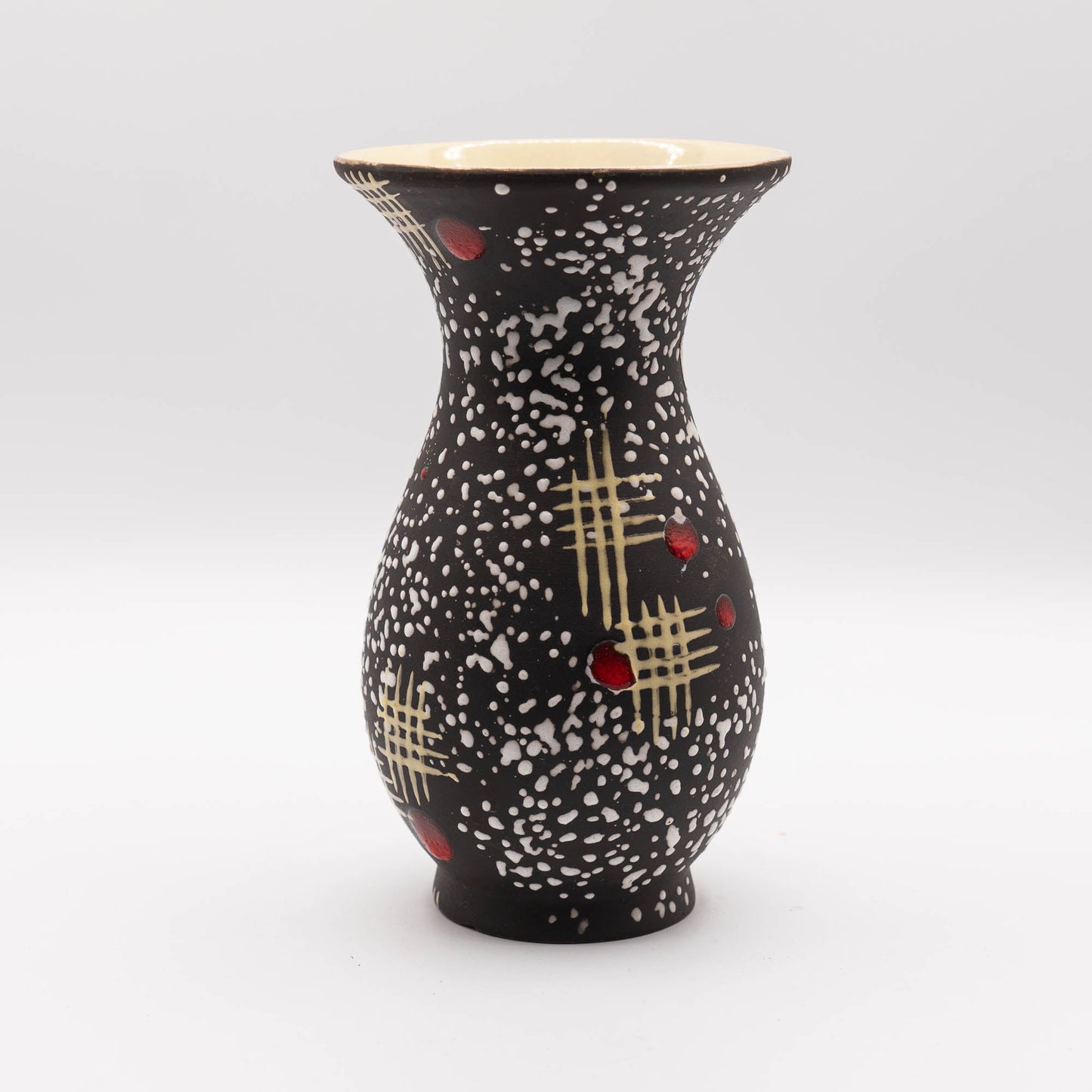
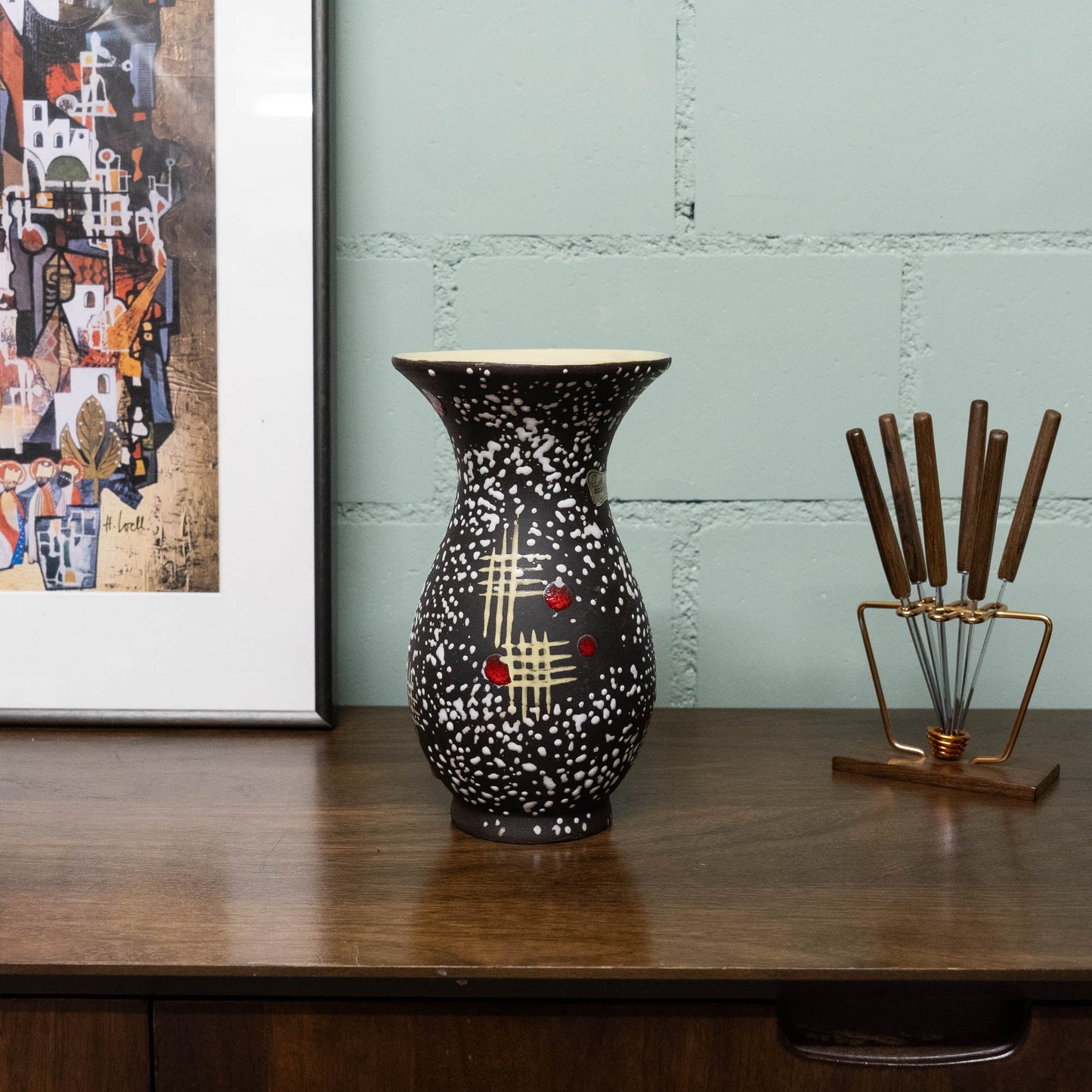
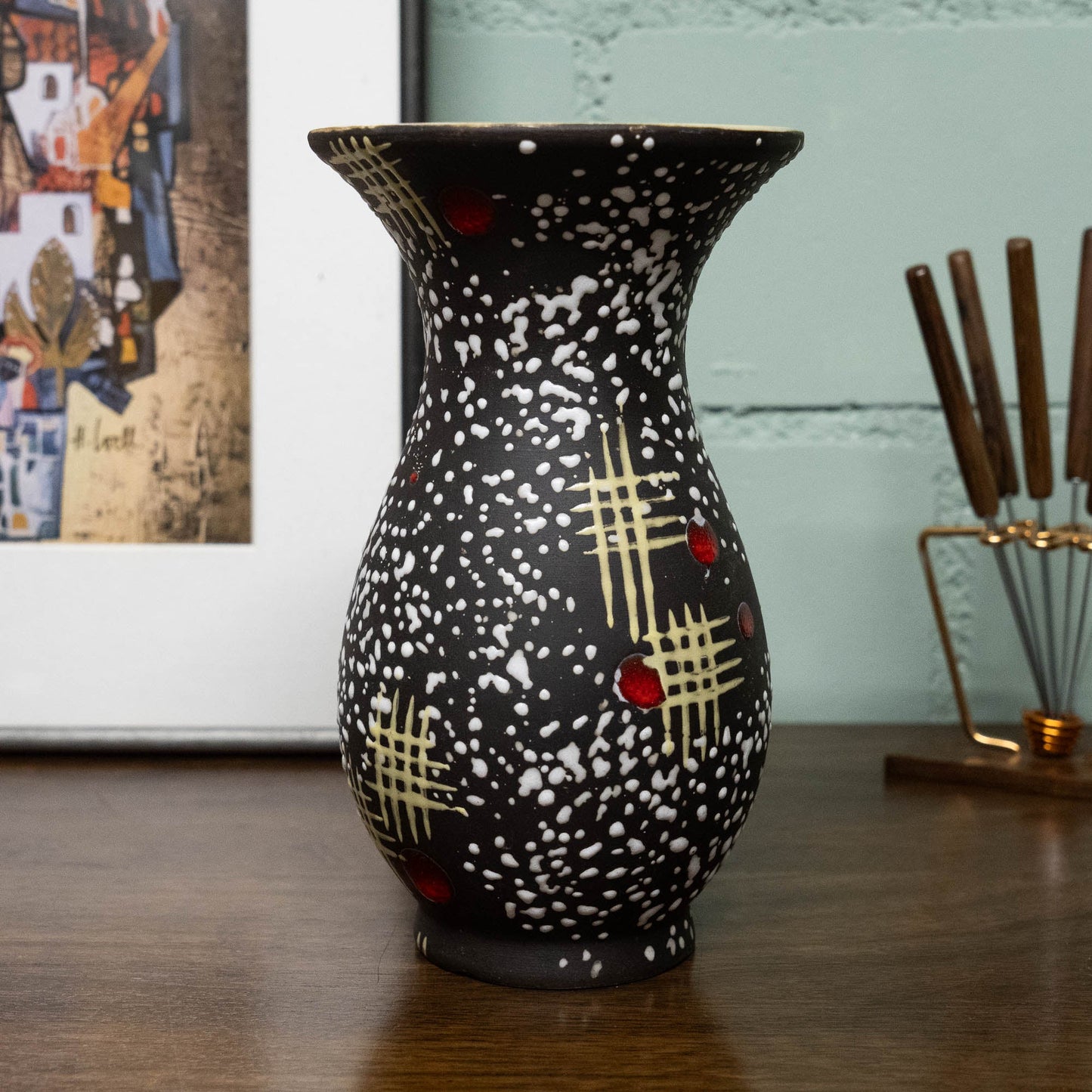
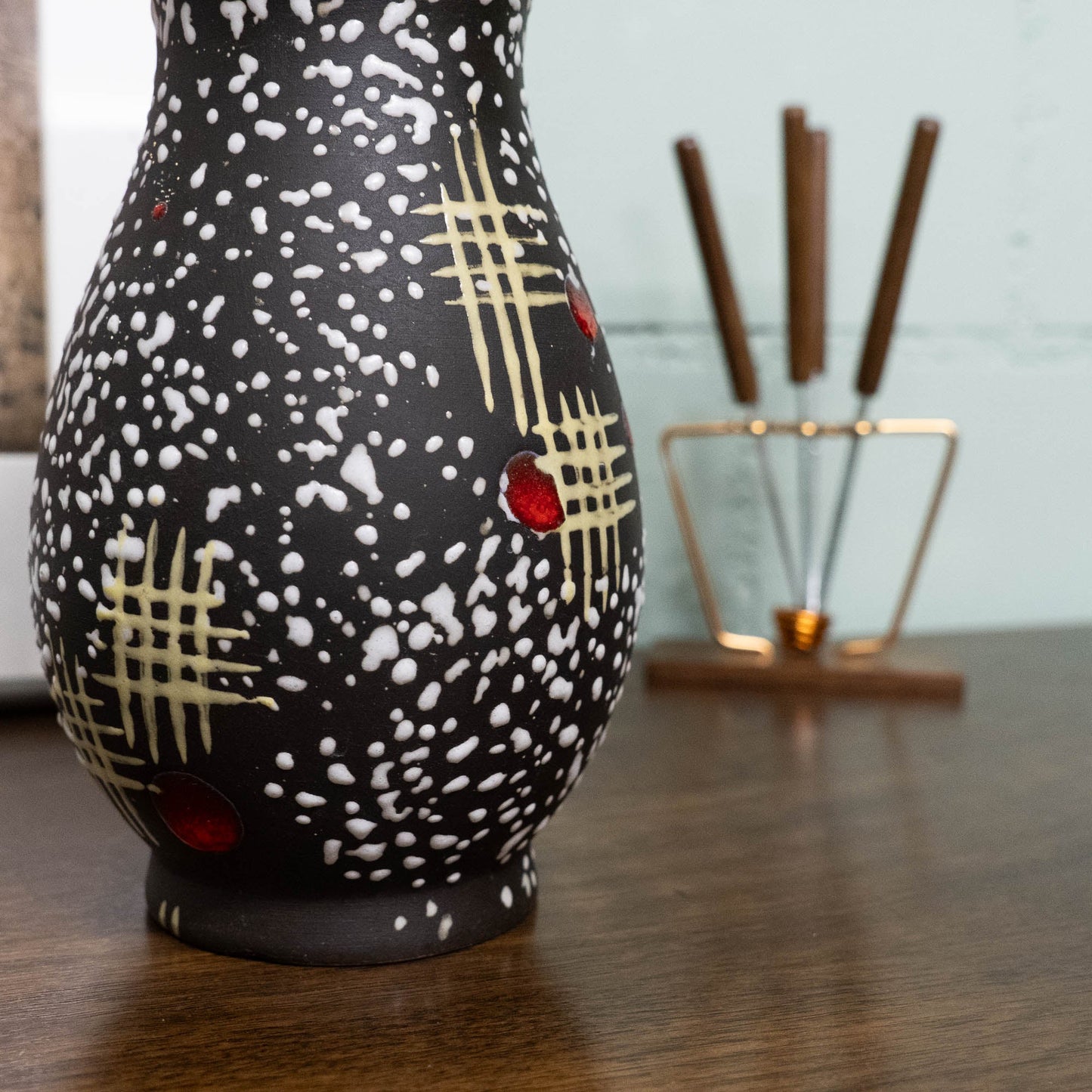
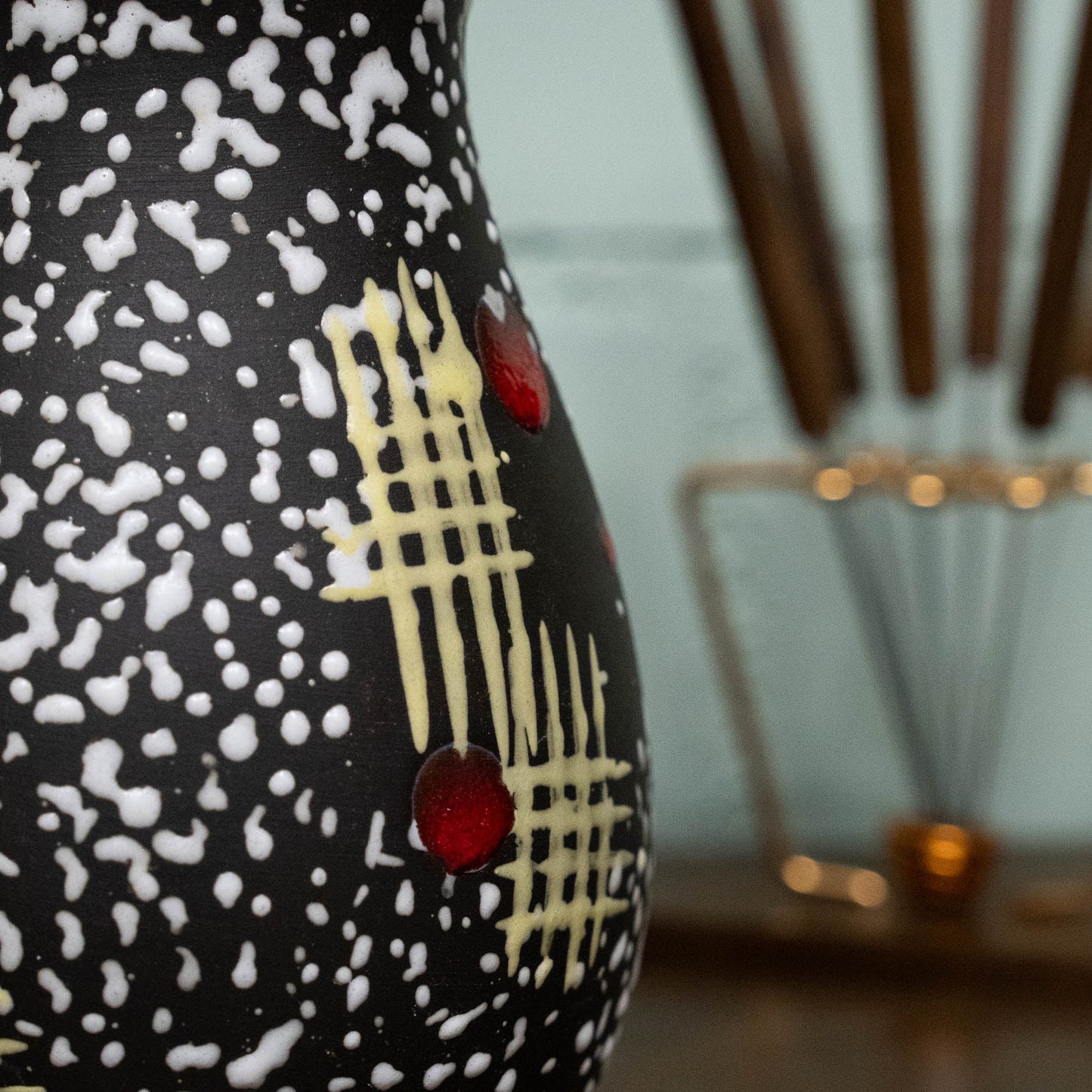
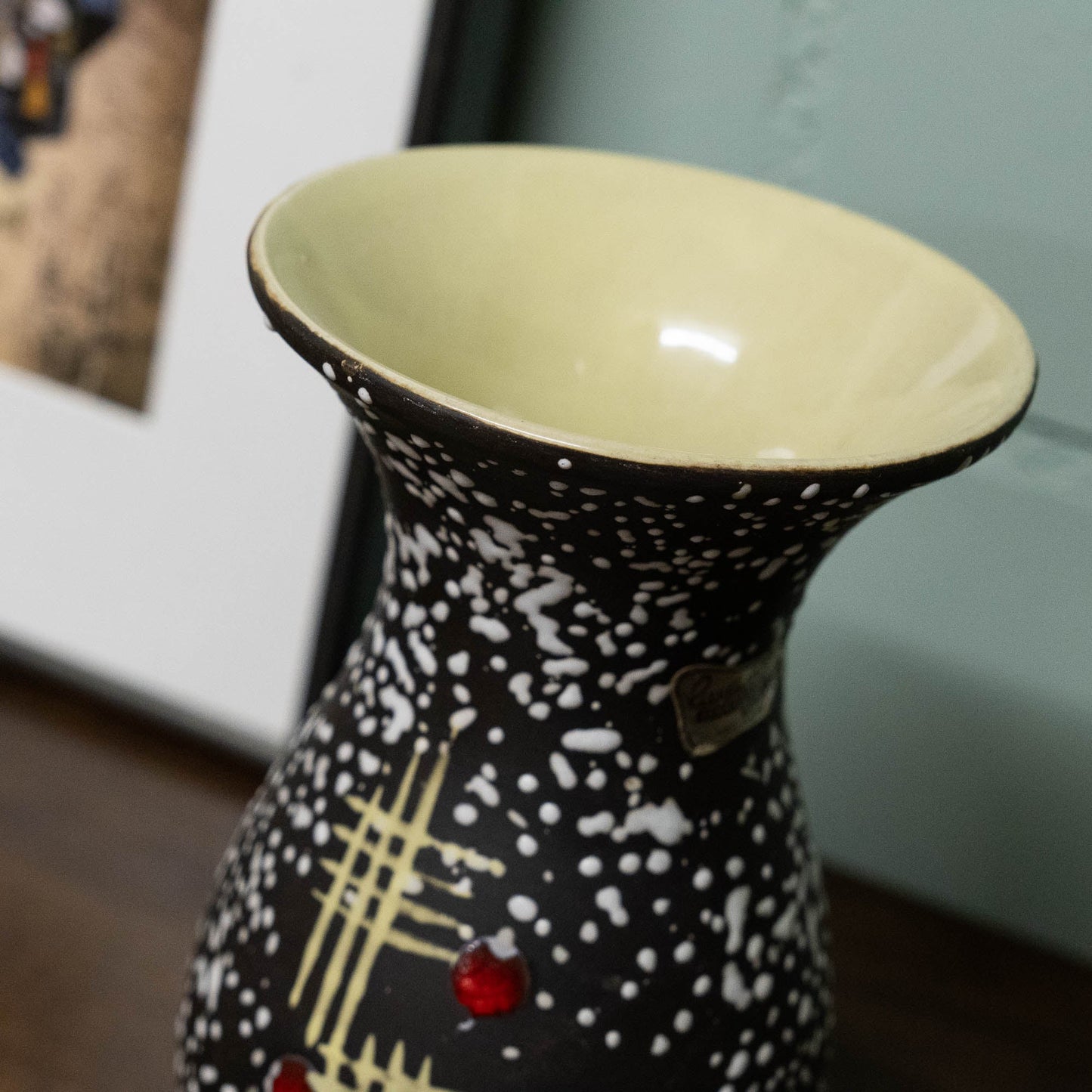
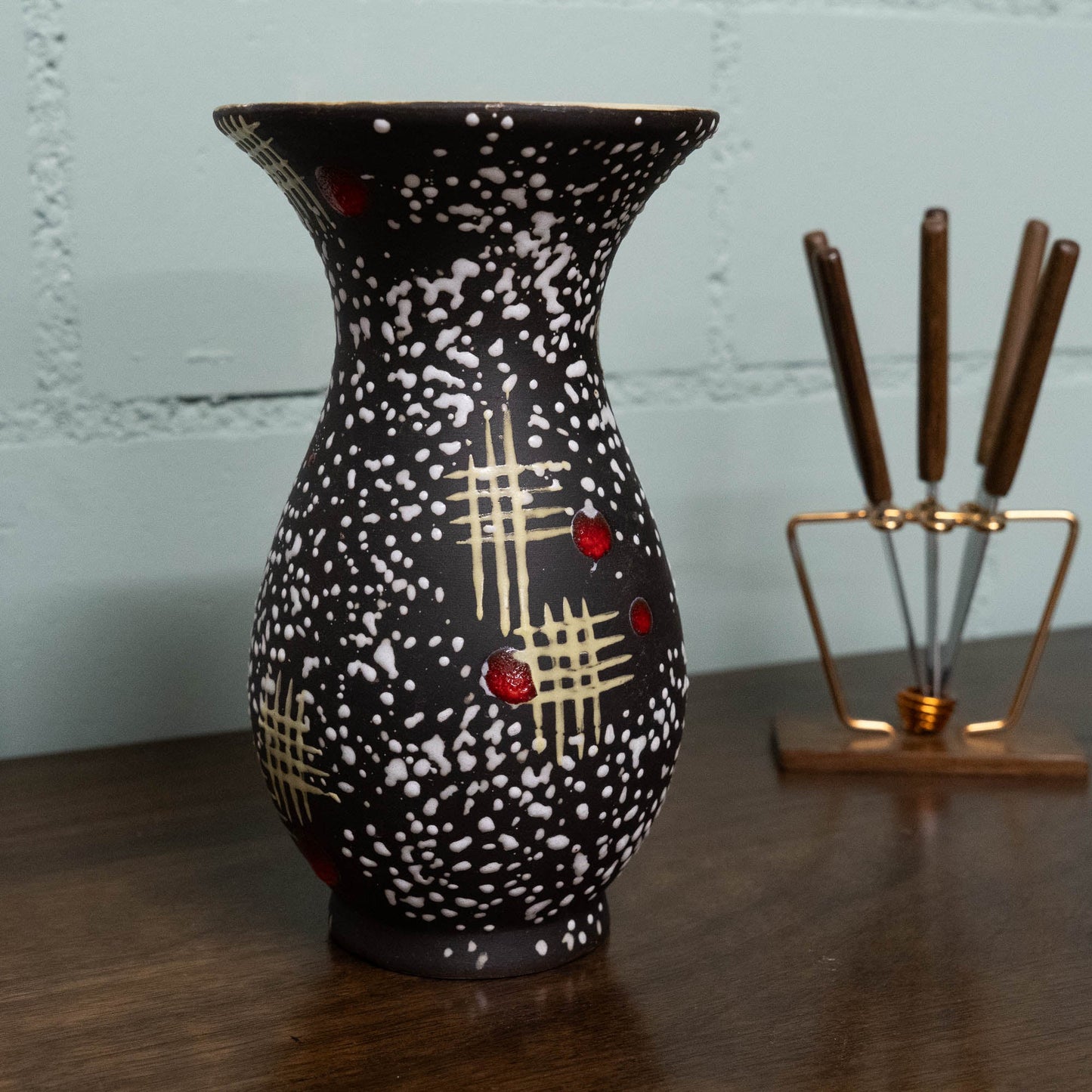
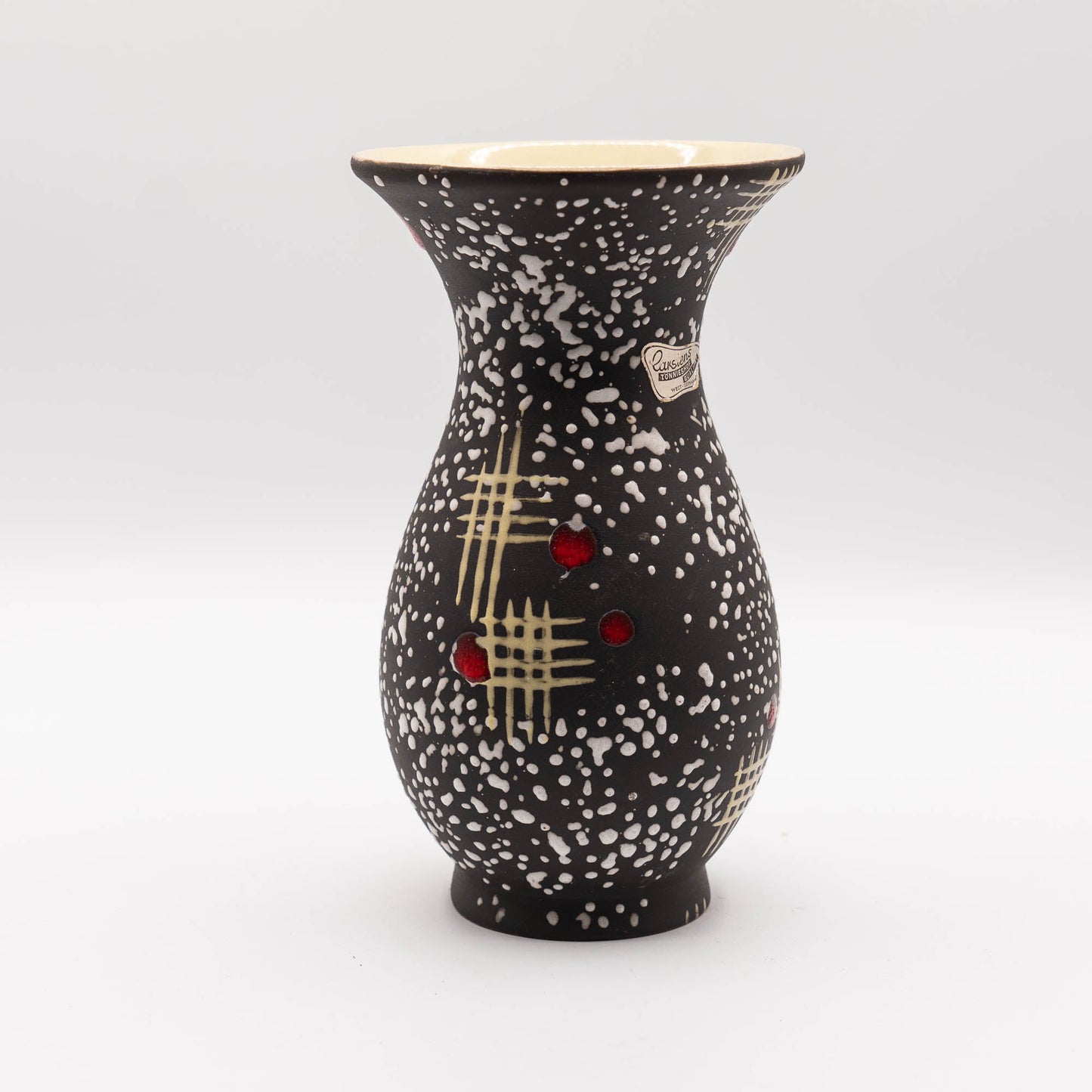
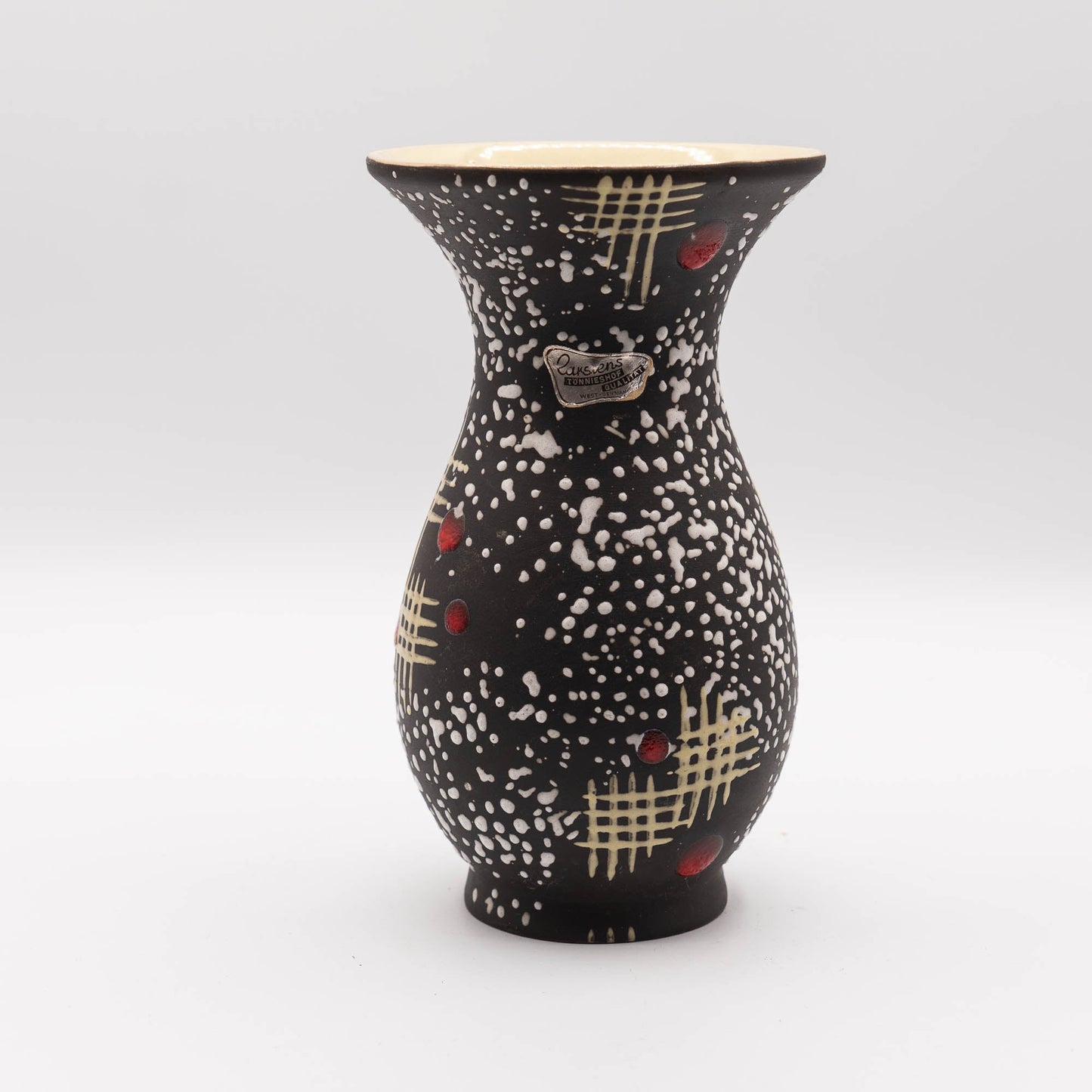
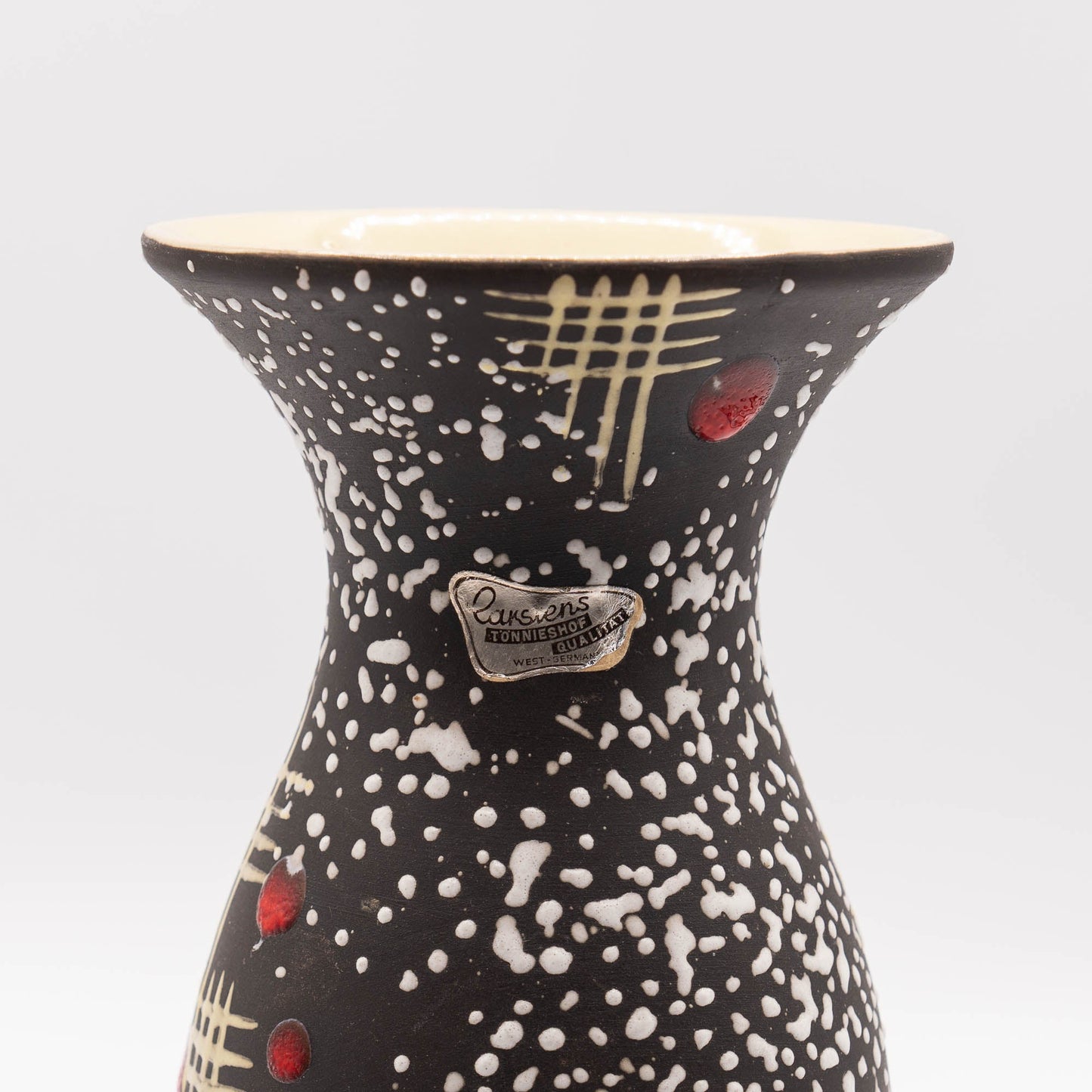
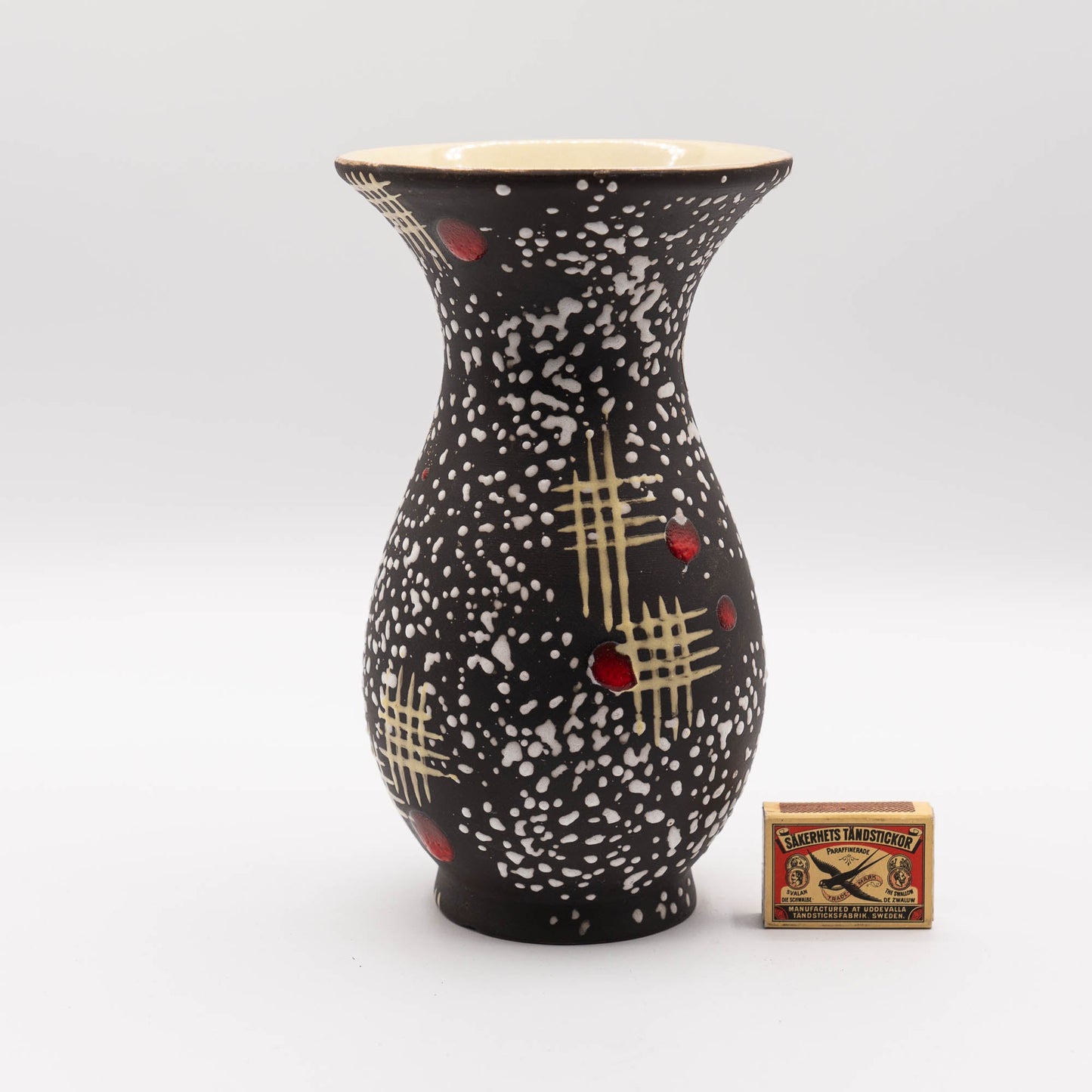
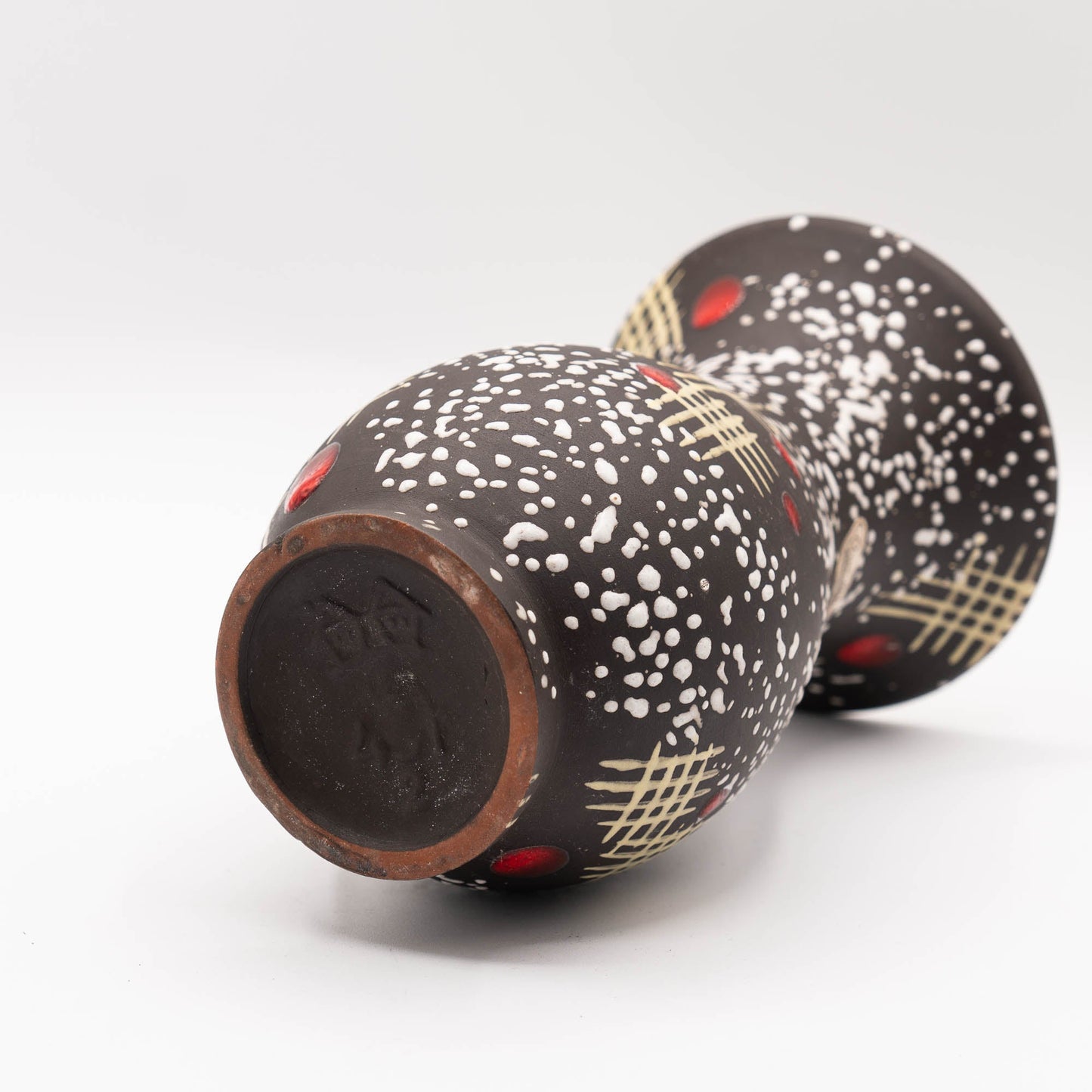
Origin & Maker
Carstens Tönnieshof was a well-known German pottery company, established in the mid-20th century and primarily associated with West German ceramics. The company was founded by Christian Heinrich Carstens and initially operated under the name "Carstens-Uffrecht." However, it wasn't until the post-war period, around the 1950s and 1960s, that Carstens Tönnieshof truly rose to prominence, producing a wide range of decorative ceramics that have become iconic pieces in mid-century design.
The company’s work is often characterised by bold, experimental forms, vibrant glazes, and unique, textured finishes. Many of their pieces, like other West German ceramics of the time, fall under the "Fat Lava" style, which became incredibly popular during the 1960s and 1970s. These designs often featured thick, volcanic-like glazes, with rich colour palettes and rugged surfaces, giving the pieces a distinctive and dramatic appearance.
Carstens Tönnieshof produced a variety of items, from vases to decorative tableware, and was renowned for their innovative use of form and glaze, often pushing the boundaries of conventional ceramic design. Today, Carstens' work is highly collectible, and their pieces remain a hallmark of mid-century modern German pottery, valued for both their aesthetic appeal and craftsmanship.
Blog posts
View all-

A Serendipitous Morning at the Rue de Bretagne ...
There are few joys in life that match the thrill of stumbling upon a hidden treasure, and for me, flea markets hold that magical allure. One of my favourite flea...
A Serendipitous Morning at the Rue de Bretagne ...
There are few joys in life that match the thrill of stumbling upon a hidden treasure, and for me, flea markets hold that magical allure. One of my favourite flea...
-

Emile Bourgeois and "Le Grand Dépôt" in Paris
Recently, I found this stunning Sarreguemines wash set. It was at the Brocante in Belfort, France. On this day, we had got up at 4 AM to be there in...
Emile Bourgeois and "Le Grand Dépôt" in Paris
Recently, I found this stunning Sarreguemines wash set. It was at the Brocante in Belfort, France. On this day, we had got up at 4 AM to be there in...
-

The Legacy of Robert Haviland: A Journey from N...
The story of Robert Haviland porcelain is one of artistry, transatlantic ambition, and enduring heritage. It begins in the mid-19th century when David Haviland, an enterprising New Yorker, founded Haviland...
The Legacy of Robert Haviland: A Journey from N...
The story of Robert Haviland porcelain is one of artistry, transatlantic ambition, and enduring heritage. It begins in the mid-19th century when David Haviland, an enterprising New Yorker, founded Haviland...















